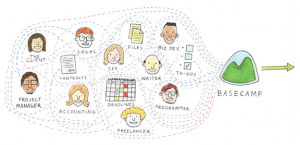The goal of operational excellence is to improve business performance through process. Operational excellence is what enables organizations to achieve long-term sustainable growth. At its heart, operational excellence is about how, every person within an organization delivers value to a customer.
Dr. Joseph Juran, one of the early experts in quality management and operational excellence posited that a focus on operational excellence drives business effectiveness and organizational agility. Often achieving this capability requires successfully juggling many moving parts simultaneously.
Operational Excellence Is as Simple as Spinning Plates
When I think of juggling many moving parts at the same time, I recall the first time I saw a plate spinning performance at a circus. I like many others were dazzled as the juggler kept adding another spinning piece of dishware every few minutes while keeping the existing plates spinning. It was so cool that I couldn’t wait to get home and give it a go. Of course, as soon as my mother saw my brother and I begin to take some plates from the cabinet she immediately put the kabash on our plans and offered up some plastic plates.
 Today, many leaders are working hard to keep all of their multiple types of dishware spinning in the air. What can you do to become a good juggler and achieve operational excellence? First, you don’t need a lot of special equipment to become a good juggler. What do you need? Successful jugglers know that to keep their spinning items from crashing to the ground takes mastery of hand-eye coordination, quick reflexes and a good sense of balance. Valuable skills for any business leader.
Today, many leaders are working hard to keep all of their multiple types of dishware spinning in the air. What can you do to become a good juggler and achieve operational excellence? First, you don’t need a lot of special equipment to become a good juggler. What do you need? Successful jugglers know that to keep their spinning items from crashing to the ground takes mastery of hand-eye coordination, quick reflexes and a good sense of balance. Valuable skills for any business leader.
Besides these skills, plate spinning also takes well-balanced symmetrical dishes. Plates with an indentation in the center make it easier to place it on the dowel and rotate the plate. Upraised rims on the bottom also help. This translates to business as well. The heart of operational excellence is process. Every business runs on processes and they exist across the organization. For example, processes are implemented to facilitate internal and external communication, product/service development and delivery, customer experience, planning, talent management, supply chain management, and so on.
For business leaders to successfully juggle all of their processes to support operational excellence requires well-defined clearly documented processes. Is this the case in your organization?
If not, what is your first step? Plate spinning offers a clue. Almost all jugglers start their routine with one plate, adding on throughout their act. This holds true for operational excellence.
Answer five questions to help decide which process to focus on first.
1. Which of your processes impact the customer experience?
2. Which of these will also impact your ability to grow?
3. Which of these if improved would positively impact both customer experience and growth?
4. How well does each process work?
5. For each process you identified when you answered the fourth question evaluate what it would take in terms of time, difficulty, cost, and business impact to improve the process.
Did any single process needing improvement surface that would produce the highest impact with less time, money, and effort? If so, that’s your first plate. Rank them with impact as the guiding factor. This becomes your guide for which next plates you put in the air as soon as the first process gains momentum – a combination of speed and direction.
When it comes to plate spinning, the faster the spin, the greater the stability. Stability helps talented jugglers add dance moves, somersaults and other “tricks” to their acts without dropping the plates. Stability is what enables agility.
Optimize Your Process to be More Agile
Optimize your processes to optimize your organization. Once it achieves optimum speed, momentum will carry it along, maintaining its balance without much work. This is both a good and a bad thing. It’s good if the process is working effectively and efficiently. It’s bad if it is ineffective or inefficient.
Plate spinning at its core is rather simplistic. Process improvement at its core is not complicated. These three suggestions are attributes of a proven method for process development and improvement:
1. Take corrective action. For any existing processes, if 20 percent of the work must be redone due to failures, it needs to be improved. Identify any processes within this parameter. Find the root causes for failure and remove or remedy it. Be sure to document the revised process.
2. Focus improvement on processes that used the most often. Identify and focus on processes that happen 80% of the time. Make sure your team knows HOW to successfully perform them. You will still want to capture processes that happen 20% of the time. Eventually you will want to address these. If ignored, they have a tendency to bring the plates crashing to the floor.
3. Design processes for usability. Create processes that are meaningful, usable, and will positively impact customers, employees, suppliers, growth, revenue, and profit. Keep the process map simple. When they become too complex, the process is circumvented and/or steps are bypassed. Processes reflect activity. When documenting them, use verbs and clear language so people performing the step know what they need to do. For example, phrase a step for you customer advisory board process as schedule the advisory board meeting rather than advisory board meeting.
Your processes represent all the plates every leader in an organization must keep in the air. Keeping all your plates in the air takes the right balance. Spend too much time on one process and the others fail. If they are left too long without attention, they run out of energy, spin out of control, and potentially come falling to the ground. Your company’s operational excellence requires you to be more than a good plate spinner. Operational excellence takes enabling the plates to spin on their own. And that takes stellar processes.
Business & Finance Articles on Business 2 Community
(14)









